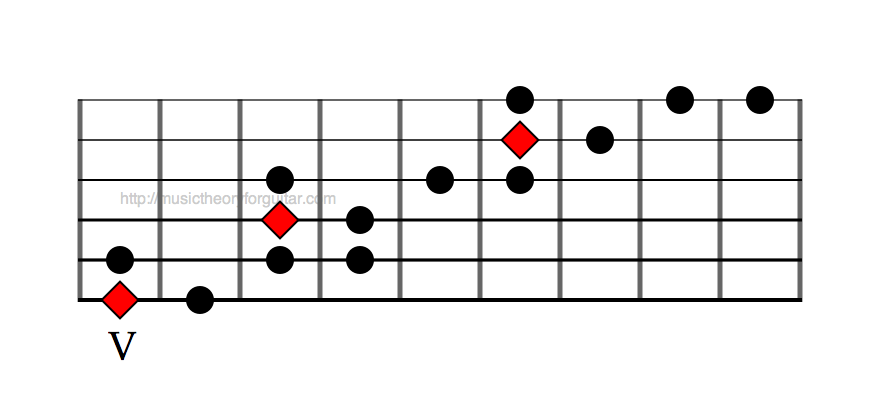Exotic Guitar Scales: the Hirajoshi Scale
In today’s lesson we are going to see a simple yet effective exotic scale. Many guitar players are under the impression that exotic scales are a difficult topic that true masters of the instrument get to study only after years and years of practice. Nothing further from the truth: as you will see below some exotic scales are pretty simple to play and do not require you to pass to the Dark Side of the Force in order to use them with great results.
The scale we are going to see is a Japanese scale called the Hirajoshi Scale (sometimes written Hirojoshi scale).
The Hirajoshi Scale
To avoid getting lost in the long (albeit interesting) history of Japanese musical scales, I’d like to start with a “hands on” approach. So here’s the Hirajoshi Scale in A:

Try and play it up and down a few times to hear the sound. As you can see, the scale patter repeats every two strings, making it easy to remember it.
The Harmony of the Hirajoshi Scale
Let’s examine the Hirajoshi scale a bit deeper. The first important characteristic is that it has only 5 notes into it (rather than 7 as the Major and Minor scales). Even more important is the fact that this scale lacks the 3rd and the 7th note. Let me explain what this means and the consequences of this fact.
If we take the A Hirajoshi scale, the notes inside it are A, Bb, D, E, F. If you go back at our lesson on triads, you will discover that the A major triad is made by the notes A, C#, E, while the A minor triad is made by A, C, E. As you can see, the two triads differ only by one note, that is called “the third” (because it’s a third above the root note). Now, if you look at our Hirajoshi scale, you see that there is no C and no C# into it. The Hirajoshi scale lacks the third. This means that the Hirajoshi scale will sound good on BOTH the A major and the A minor triads, since it will not “conflict” with the notes in them!
An Interesting Application: the 12-bar Blues
This application is a bit advanced to play, but with a bit of practice you will be able to do it. Let’s take a basic 12-bar Blues chord progression in A: A, A, A, A7, D, D7, A, A7, E7, D7, A, E7. Instead of playing the usual pentatonic scale that everybody uses, we can do something more original and use the Hirajoshi scale instead. Now, here’s how it works: on the A (or A7) chord we use the A Hirajoshi scale. On the D (or D7) chord we use the D Hirajoshi scale. On the E (or E7) scale we use the E Hirajoshi scale.

The challenge here is to keep track of the chords and change scale at the right moment. With a bit of patience and practice I’m sure you will be able to do it.
We ave sen here an unusual choice for soloing on a Blues progression. But what if you want to sound "conventional" on a Blues progression? Then you need to learn about what Blues guitar scales you can play over a standard Blues progression. Click on the button below to find out:
